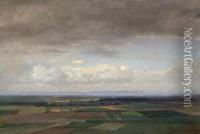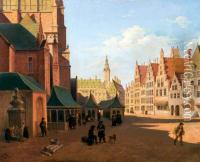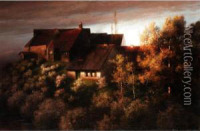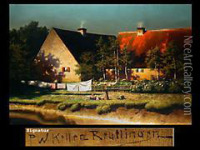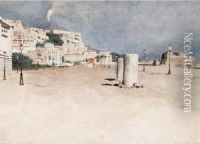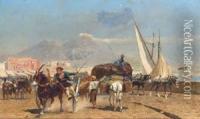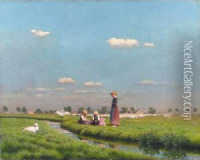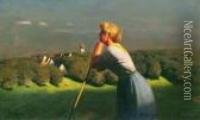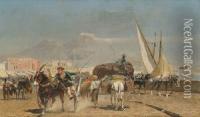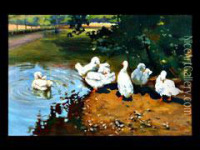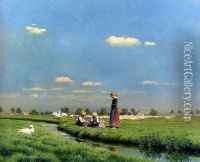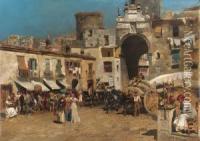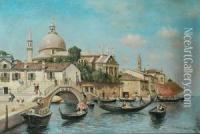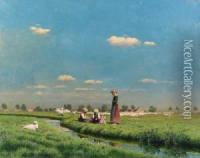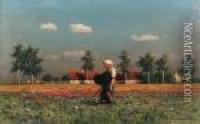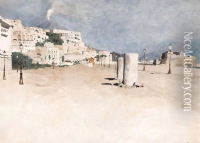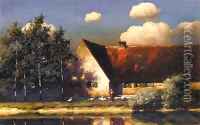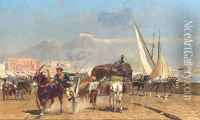Paul-Wilhelm Keller-Reutlingen Paintings
Paul-Wilhelm Keller-Reutlingen was a German artist known primarily for his printmaking and graphic arts. Born on February 2, 1872, in Reutlingen, Germany, Keller-Reutlingen developed an interest in art at a young age. He studied at the Stuttgart Art Academy and later in Munich, which was a hub for artistic innovation at the turn of the century. His early work was influenced by Symbolism and Art Nouveau, and he was associated with the Jugendstil movement, which was the German counterpart to Art Nouveau.
Throughout his career, Keller-Reutlingen was esteemed for his etchings, woodcuts, and lithographs. He had a distinctive style characterized by a combination of intricate detail and bold, expressive lines. He often depicted landscapes, urban scenes, and portraits with a focus on the interplay of light and shadow, which added a dramatic effect to his compositions.
During World War I, Keller-Reutlingen served in the German army, and his experiences influenced his later works, which frequently conveyed a more somber tone. After the war, he continued to produce art and exhibit his work. He also became involved in teaching, sharing his expertise in graphic techniques with a new generation of artists.
Paul-Wilhelm Keller-Reutlingen's contributions to printmaking were recognized with various awards throughout his career. He remained active as an artist until his later years, continually evolving his style and techniques. He passed away on July 7, 1955, in Munich, leaving behind a legacy as a skilled printmaker and an influential figure in the German art scene of the early 20th century.
